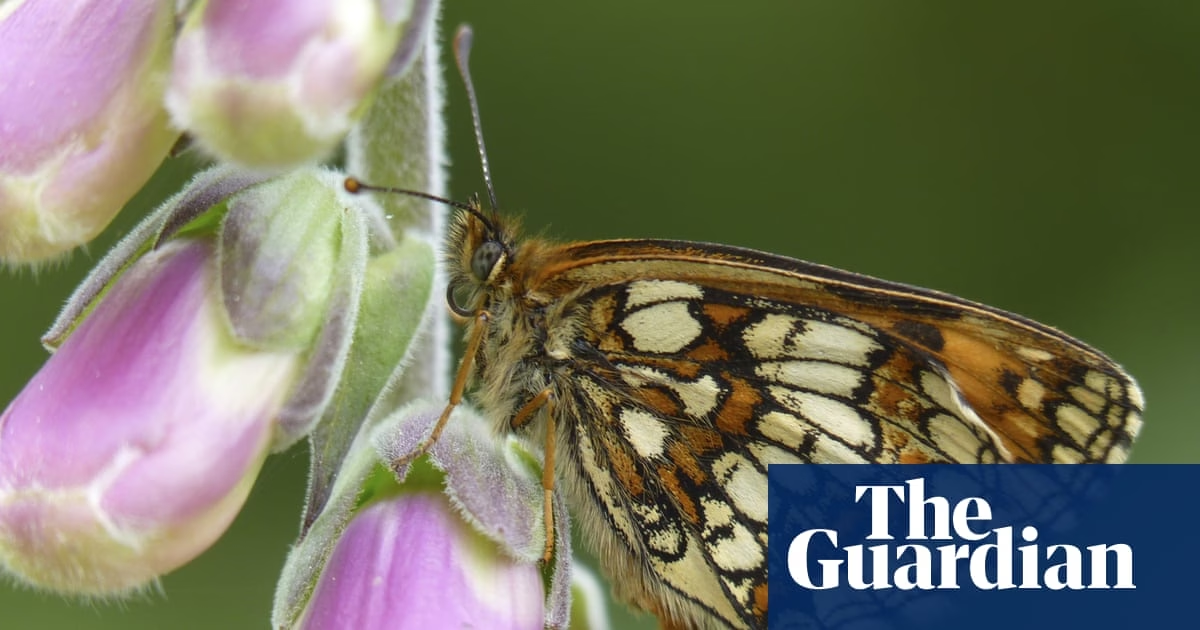The combination of sunny spring weather and habitat improved by a herd of red Devon cattle has resulted in a significant increase in one of the UK’s rarest butterflies on moorland in the English west country. In addition to an increase in established areas on Exmoor, the heath fritillary is also spreading to new areas, which experts say is highly unusual. On the National Trust’s Holnicote Estate on Exmoor and nearby lands, there have been more than 1000 recorded sightings of heath fritillary butterflies, a significant increase from around 600 at the same time last year. There are now three new spots with established colonies of the species and one site has seen a dramatic increase from four butterflies in 2024 to 186 in the current year.
The heath fritillary butterflies were almost extinct in Britain in the early 1980s but conservation work has brought the species back from the brink. To create the perfect conditions for the heath fritillary, the National Trust and the Butterfly Conservation charity are using cattle to selectively graze and trample areas for the butterfly, removing bracken, and cutting glades at the edge of woodland. However, the exceptionally warm and sunny spring that prompted the butterflies to emerge two to three weeks earlier than usual has raised concerns that unsettled weather could shorten the butterfly’s flight season and disrupt its life cycle.
Jenny Plackett, the conservation manager at Butterfly Conservation, said: “It’s wonderful to see such strong numbers of heath fritillary on Exmoor this year. They’ve clearly benefited from the warm, sunny spring, emerging as adults weeks ahead of schedule. We’ve recorded butterflies at several new sites, including areas where they haven’t been seen since the 1990s. The heath fritillary is generally very sedentary, so this kind of expansion is highly unusual and suggests that recent habitat management is working.” The heath fritillary thrives in moorland and coppiced woodland – hence its nickname – where its caterpillars feed on common cow-wheat. It is restricted to four core landscapes: Exmoor, the Tamar Valley in south-west England, the Blean woods in Kent, and woods in south Essex.
Source: https://www.theguardian.com/environment/2025/jun/25/heath-fritillary-butterfly-exmoor-numbers-rise







